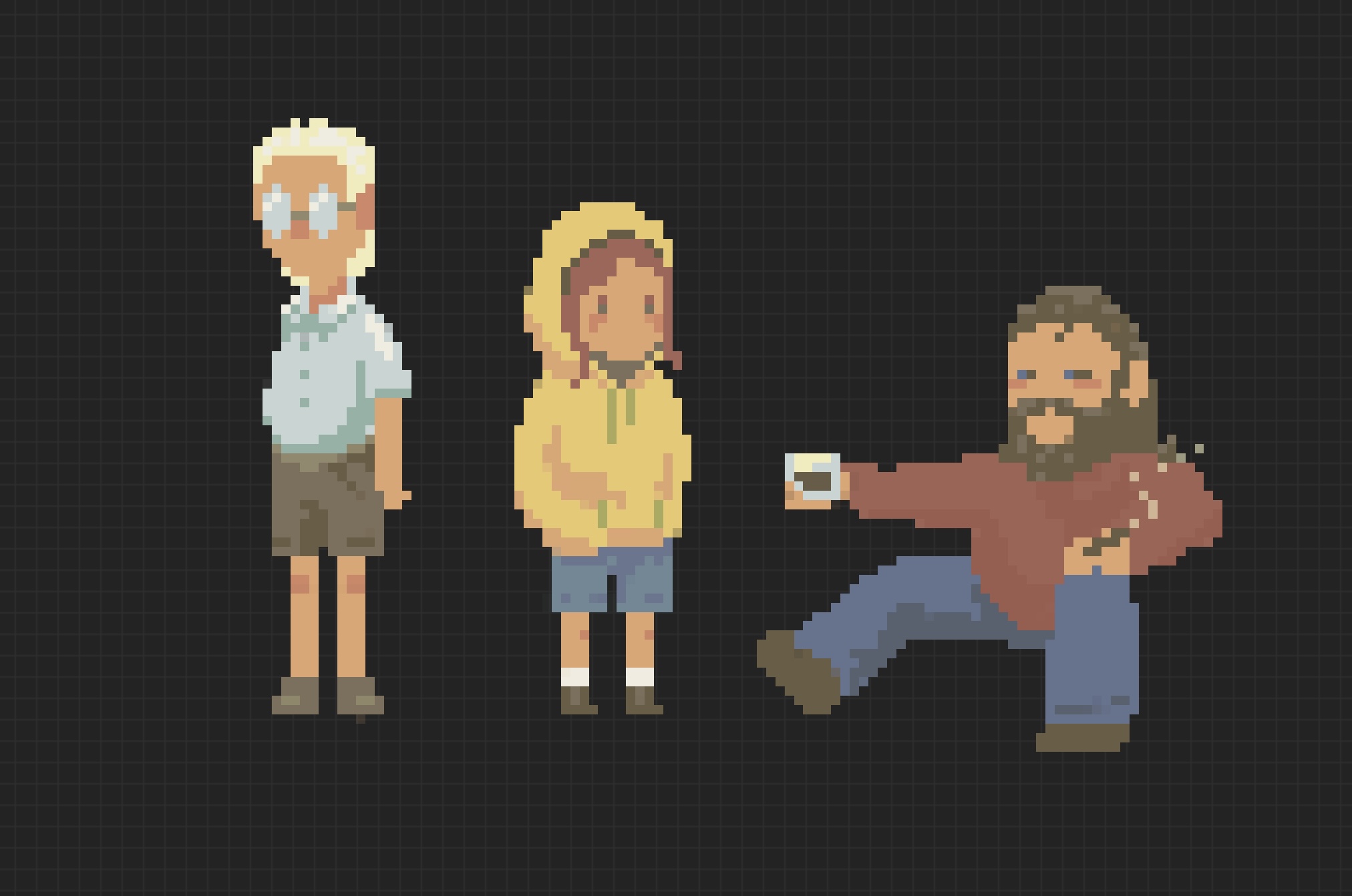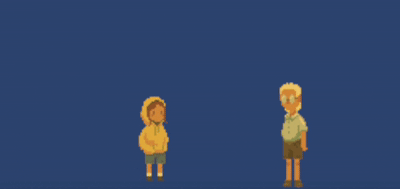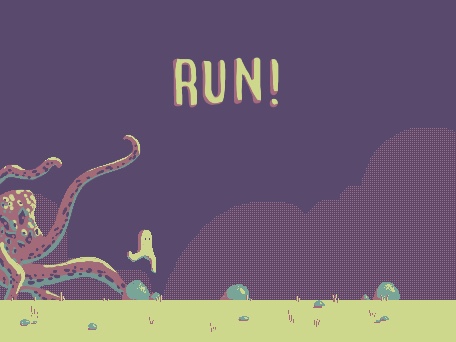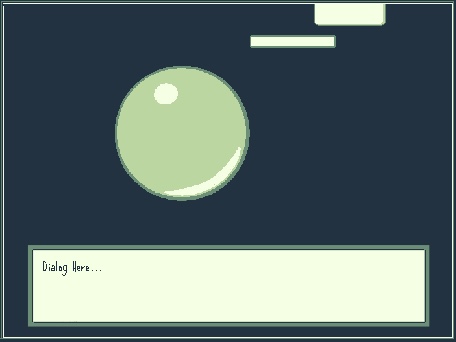Soup Weather - Concept Development
Working Title:
Soup Weather
Concept Statement:
Soup Weather is a narrative exploration game in which you play as a borderline mentally deranged, but sort of normal human named Bean. Learn about Bean’s life and relationships through strange conversations, weird inner dialogue, and nonsensical mini games as they slip further into their own delusions.
Genres:
Narrative, platform, single player
Concept process:
Common themes within games that personally interested me are those that are more thoughtful, story driven experiences with calming aesthetics like Fall of Porcupine or Night in the Woods. Whilst enjoyable I find combat heavy games to be monotonous and unstimulating for my shorter attention span.
Soup Weather is a combination of these preferences with inspirations for the narrative taken from my own experiences, thoughts, and conversations with others in my life.
With a background in the arts, I am keen to develop more of a poetic atmosphere with a focus on exploration of mental health primarily through character interaction. Like the games mentioned above, dialog will be the main component of storytelling within the game. Through conversations the player will gain an understanding of the other characters in Bean’s life and discover their more complex personalities as the narrative unfolds. In addition, there will be a separate inner dialogue when the player interacts with objects within the world revealing more about our protagonist.
Audience and Competitive Analysis:
Soup Weather is directed towards casual gamers, lovers of storytelling and fans of the cosy gaming genre. With fairly simple gameplay mechanics and a narrative driven approach, it’s easy for non-gamers to pick up however as a game with a heavier theme it is not suitable to younger audiences.
Representation of ideal-self identities in media in which players are able to identify more closely with the characters they play are positively linked to personal identification, self-exploration, goal adoption, and an overall improvement in psychological wellbeing[1]. Soup Weather presents a more emotionally complex protagonist with specific representation for those experiencing grief related depression.
Previous games such as Gris, which explores themes of trauma, and Night in the Woods, which presents a character dealing with mood disorders, have been received well by audiences. Gris received 71,489 reviews on Steam, 96% of which were positive[2]. Similarly, 94% of reviews Night in the Woods received (of 16,023) were positive[3].
The use of mini games within Soup Weather appeals to audiences with shorter attention spans and prevents a feeling of monotony. Mini games provide players with a break from the main storyline, whilst also maintaining an interesting pace by providing new mechanics or experimenting with art style. This improves player engagement and prevents gameplay fatigue[4]. Recent releases by developers Hazelight studios It Takes Two and Split fiction were received very positively by the public with 95% (177,934 reviews) and 98% (42,889 reviews) positive reviews, respectively[5][6].
 Character preliminary concept designs: Pop, Bean, Bo (L to R).
Character preliminary concept designs: Pop, Bean, Bo (L to R).
Characters:
Meet Bean! A 20-something year old with no job, no money, and at least 4 unpaid parking tickets. Feeling lost, bean’s day to day activities involve strolling through town looking at a bunch of stuff, talking to her weird neighbours, and becoming best friends with her grandad (very normal, not sad). Bean wouldn’t say she suffers from depression because it actually comes quite naturally to her.
Meet Pop! Bean’s recently widowed grandfather. Pop doesn’t like to so much except look at things and say something profound every once in a while. Whilst he won’t admit it, he’s a bit lonely and really looks forwards to visits form Bean.
Meet Bo! Bean’s best friend (and ex-boyfriend, yikes). Bo likes to drink whiskey, smoke cigars, and imagine he’s some sort of rough cowboy but in reality, he is on the 9 to 5 grind and can’t live without his phone and his video games. Bo is dealing with his own demons but good luck trying to get him to open up, he’s emotionally unavailable!
Minor Characters:
Romy: Bean’s housemate, parties hard, always regrets it in the morning.
Lu: Lu went to school with Bean but also went to uni, got a job, and is actually a super put together person! This annoys Bean. Lu is secretly struggling with the weight of her responsibilities…
Huke: Bean’s Neighbour, a finance bro, who’s always checking to see if Bean has taken his investment advice and whether she’s diversifying her portfolio. Bean always lies to him.
Player Roles and Motivations:
With no job, and no real hobbies, Bean doesn’t know what to do with her days except roam around her town making witty comments to herself and looking at stuff. Each day she finds someone to talk to and tries to avoid talking about anything serious, but this avoidant routine has started to take a toll.
Having not dealt with the death of her friend, Bean slowly slips into a grief wave. As her state of mind becomes more unstable, the world around her become bleak and her thoughts a little more nonsensical.
Spanning over a few days, the player will explore Bean’s relationships and gain perspective on her life through interaction with objects and other characters. Each day the player will have a conversation to learn more about her friends and complete a nostalgic style minigame relevant to her current state of mind.
Bean’s journey takes a turn when she finally stops avoiding her emotions, gets some help, and has a real conversation with Bo.
Environment:
Set in the small town of ____ as the seasons shift into autumn, Bean can move, run, and jump around this idyllic little location. Rendered in a nostalgic pixel art style in conjunction with warm colours and buildings inspired by real locations, ___ provides a cosy, homey atmosphere for our characters to interact within.
 Environment preliminary concept design.
Environment preliminary concept design.
Dialogue:
The main driving force of the narrative is the dialogue. With each new day in ___ there will be unique conversations to be had with the other characters. These conversations are pre-determined and they player is an observer of these conversations and are not able to select responses (perhaps in later developments I will implement a response selection system).

Dialogue interaction prototype.
Interaction:
Throughout the world are objects that when interacted with by the player provoke the protagonist’s inner dialogue (often a string of thoughts) or will enlarge the object to be seen or read better by the player.
Mini Games:
As a part of the main story, each day the player must complete a mini game in order to progress to the next game day. When a player engages with a mini game, they will temporarily switch to that games scene and upon conclusion will resume their location in the world. Some exceptions to this will occur such as when the mini game is required to be played at the beginning or end of game day (spawning at the player home on the next game day)
Mini games will be simple imitations of simple games such as Pong, Google Dino Run, Brick Breaker.


Mini game preliminary concept designs.
Story progression:
Over the span of a few days our character slips in an unstable state of mind, this is reflected in the abstraction of inner dialogue and mini games associated with these dialogues:
Day 1: The player gets a basic introduction to the other characters and their roles in Bean’s life. The dialogue and interaction will be friendly and unsubstantial at this stage. The mini game will have little association with the main narrative and will just be a fun little activity for the player.
Day 2: Similar routine to day 1 with more involved dialogue and a different mini game.
Day 3: The day begins with a strange dream in the form of a mini game. Internal dialogue begins to become disjointed from the conversations with the other characters; whilst Bean continues to talk to her friends about their lives her thoughts begin to become more delusional and she neglects to share this with her friends. Pop opens up to Bean about his recent loss.
Day 4: The effects of Bean’s neglect on her own mental health become evident. Bean is unable to interact with other characters today, max speed is significantly reduced, and the environment has grown mistier and grey. There is no mini game, the day ends when Bean enters a new area of the town where she discovers a gravestone and makes the decision to see a doctor.
Day 5: The player will enter straight into a mini game in conjunction with dialogue between Bean and a psychologist. The conversation follows a metaphor about dealing with grief over time and it is revealed that bean has been slipping into a grief wave after the loss of her friend a year prior. The metaphor is visualised as a mini game that is a mash up of Pong and Brick Breaker
Day 6: The environment has cleared revealing bright autumn colours; Bean has regained some (but not full) speed. Bean becomes more coherent in her interactions and the game ends when she opens up to Bo about her grief as they sit and watch the autumn leaves fall together.
References
Allan Alcorn, Atari. “Pong,” 1972. Video game.
Ali Asaria. “Brick Breaker,” 1999. Mobile video game
Critical Rabbit, Assemble Entertainment. “Fall of Porcupine,” 2021. Video game
Google Chrome. “Google Dino Run,” 2014. Video game.
[1] Przybylski, Andrew K., Netta Weinstein, Kou Murayama, Martin F. Lynch, and Richard M. Ryan. “The Ideal Self at Play.” Psychological Science 23, no. 1 (December 14, 2011): 69–76. https://doi.org/10.1177/0956797611418676.
[2] Nomada Studio, Devolver Digital. “GRIS,” 2018. Video game. https://store.steampowered.com/app/683320/GRIS/.
[3] Infinite Fall, Finji. “Night in the Woods,” 2017. Video game. https://store.steampowered.com/app/481510/Night_in_the_Woods/.
[4] “Minigames 101: Quick Diversions for Fun & Rewards,” May 28, 2023. https://www.lenovo.com/us/en/glossary/minigame/?orgRef=https%253A%252F%252Fwww.google.com%252F.
[5] Hazelight Studios. “It Takes Two,” 2021. Video game. https://store.steampowered.com/app/1426210/It_Takes_Two/.
[6] Hazelight Studios. “Split Fiction,” 2025. Video game. https://store.steampowered.com/app/2001120/Split_Fiction/.
Allan Alcorn, Atari. “Pong,” 1972. Video game.
Ali Asaria. “Brick Breaker,” 1999. Mobile video game
Critical Rabbit, Assemble Entertainment. “Fall of Porcupine,” 2021. Video game
Google Chrome. “Google Dino Run,” 2014. Video game.
Soup Weather
| Status | In development |
| Author | BeemJerky |
More posts
- Devlog - Testing96 days ago
- Documentation and User Guide97 days ago
- Devlog - UI & PolishingMay 25, 2025
- Devlog - GRAPHICS BABY!May 18, 2025
- Devlog - Mini Games and DialogueMay 11, 2025
- Devlog - Basic Level BlockingMay 04, 2025
- Devlog - Player MovementApr 25, 2025
Comments
Log in with itch.io to leave a comment.
A fantastic concept, well written and well thought out with an interesting protagonist and a fleshed out story and characters, nice work! The concept art expertly communicates a clear idea of the visual style and setting for the game too.
My main concern here is scope, given there are quite a few "days" in the game, each with their own set of dialogue and interactions and minigames. However it is great to see that you have already begun on the dialogue system which was going to be one of the biggest chunks of time. If you feel that response selection won't add that much to the game given there isn't really a branching storyline here then definitely exclude that from the prototype.
The minigames are the biggest opportunity for scope issues, even though the examples are fairly simple-style games we have learned that even just making Pong can be an ordeal in Unity. Dino run is relatively straightforward and you'll find tutorials on this, but I think it is just the sheer amount of work that will go in to multiple games in addition to the core game itself. So think about your "vertical slice" here, and what is needed to communicate the style of the game, while acknowledging that the full game (that I encourage you to continue with after the unit is over) would contain more than what you end up submitting for assignment 3. A smaller number of days and just one or two minigames all done well would be plenty enough to HD assignment 3 (check the rubric for that to see if you can approach this in a pragmatic way).
Scope issues aside, very very excited to see how this one goes. Your proficiency in writing and hopefully the learning experience of making a narrative game here will put you in a great position in the future for funding opportunities as there is a thirst from the State Government to support developers making games of this style (given the funding body's roots in tradition screen media like TV and movies).